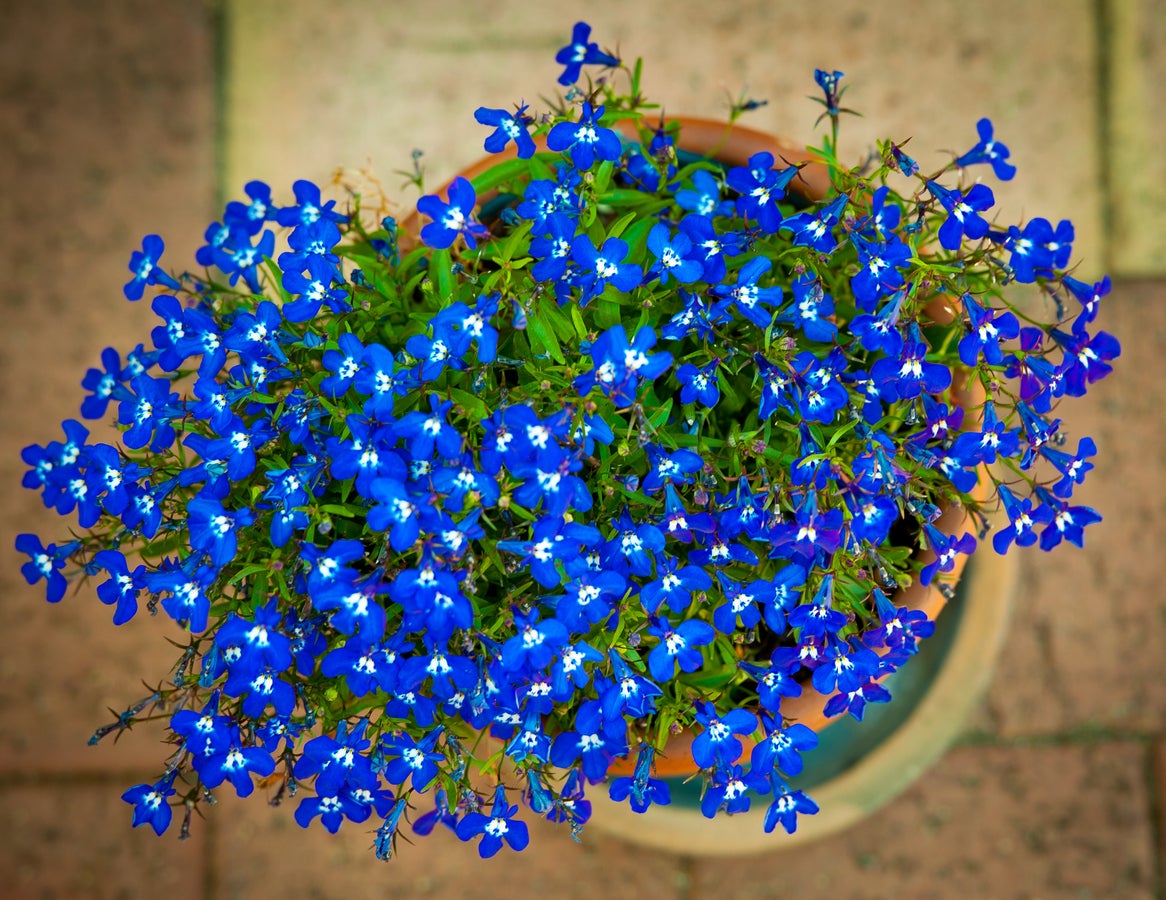Potted Lobelia Care: Tips For Growing Lobelia In Containers
Plant ornamental lobelia in a basket or containers for a splash of bright color.


Container Grown Lobelia – Can You Grow Lobelia In Planters
Lobelia plants are a popular choice for flower borders and ornamental container plantings. Most commonly, red cardinal lobelia and annual lobelia add beautiful color and soft, airy texture to the garden. While cardinal lobelia is most often grown as a perennial, other types are treated as short blooming annual flowers for the spring and the summer garden. This makes them an especially valuable asset when planning ornamental containers for landscapes and front porches. Read on to learn more about potted lobelia care.
Growing Lobelia in Containers
Annual lobelia plants come in a wide range of types, including those which are often seen trailing from containers. These petite pink, white, or blue flowers create a dramatic impact in planters. The profusion of blooms makes growing lobelia in a pot an excellent choice.
Deciding to grow lobelia in planters is a great way to ensure the success of this flower. Although these flowering plants are beautiful, they do require some specific growing conditions to truly thrive. When it comes to the needs of potted lobelia, care of the container will directly impact the overall health and bloom time of the plant.
Like many flowers, container grown lobelia do best when given ample sunlight. In cooler growing zones, this means that the planter should receive at least six hours of sunlight each day. When growing lobelia in places with warmer daytime temperatures, the plant may need a location that is shaded throughout the hottest portions of the day.
Lobelia plants are also very sensitive to heat and moisture levels within the soil. Since the perennial flowers are native to marshlands, it is imperative that the soil of container grown lobelia plants is not allowed to dry completely. These plants require consistent moisture, but they do not grow well when overwatered or when containers have become waterlogged.
While lobelia in planters can look quite lovely throughout the spring and early summer, it is very common to see the plants begin to struggle once temperatures begin to rise. As a result, lobelia may cease to bloom or die back throughout this time period. Lobelia plants that have stopping blooming will likely resume their flowering again in the fall, once temperatures have started to cool.
Sign up for the Gardening Know How newsletter today and receive a free copy of our e-book "How to Grow Delicious Tomatoes".

Tonya Barnett has been gardening for 13 years. Flowers are her passion. She has transformed her backyard into a cut flower garden, which she regularly chronicles on her YouTube channel http://www.youtube.com/@tonyawiththeflowers.